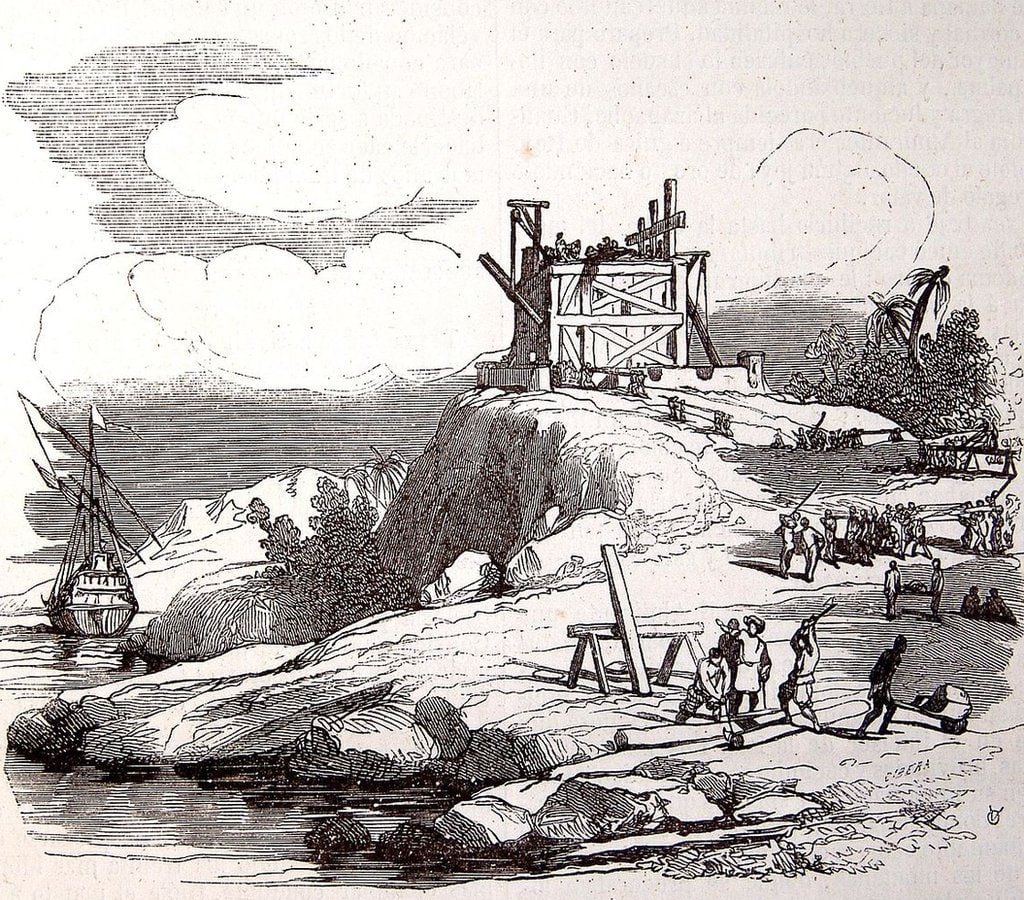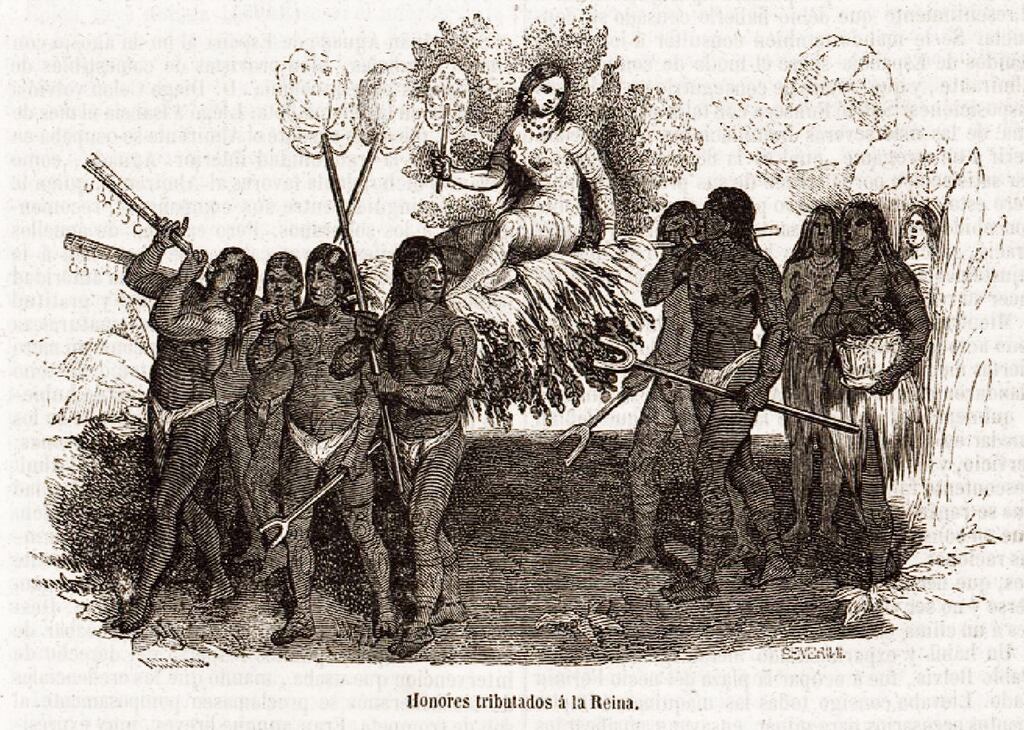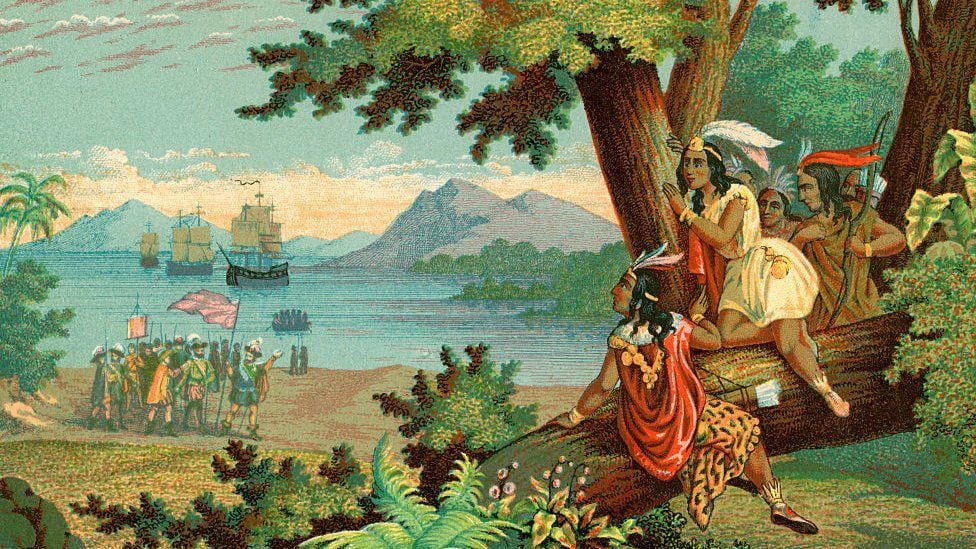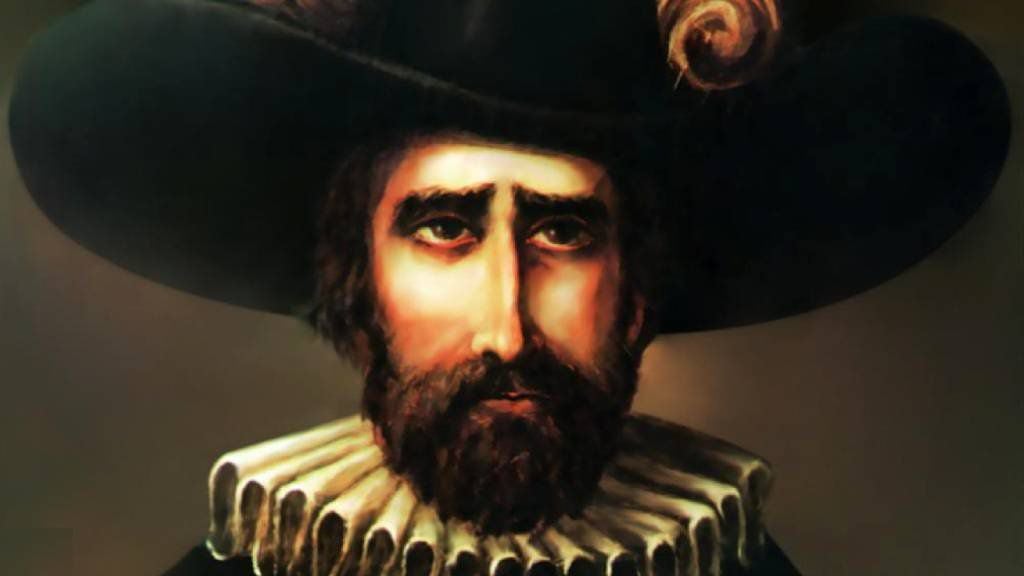:quality(75)/cloudfront-us-east-1.images.arcpublishing.com/elcomercio/GE4TCMJNGEYC2MJSKQYDAORRHE.jpg)
Honoring her name, which means “golden flower”, Anacaona was a beautiful and powerful Taíno princess.
But also, she was a cultured and talented woman who believed in peace and coexistence, and paid for it with her life.
LOOK: The rise of China and the decline of the US: which are the best universities in the world, according to the Times Higher Education ranking
Perhaps that is why she is one of the few indigenous people mentioned by name in the writings of the first years of the conquest of America (15th century).
In his “Historia de Indias” (1527-1547), Fray Bartolomé de Las Casas described it as “a very remarkable woman, very prudent, very graceful and palatial in her speeches and arts and movements and very friendly to the Christians“.
And, according to the French Jesuit Pierre François Xavier de Charlevoix, she was a woman “with much genius superior to her sex and her nation”, as he wrote in Histoire de l’Isle espagnole ou de S. Domingue, from 1730.
Despite the fact that few chroniclers knew her or were witnesses to the events, writings like these have made it possible to outline the story of a woman who became a legend and, more than 500 years after her death, is still alive.
powerful family
On December 5, 1492, when Christopher Columbus and his crew arrived on the island that the natives called Quisqueya (“mother of all lands”), Bohio (“house for the Tainos”), Babeque (“lands with gold”) and Ayti, and that the Spaniards baptized Hispaniola, it is thought that Anacaona was 18 years old.
At that time, the island was the majority domain of the Taínos, and, according to Las Casas, there were five chiefdoms.
The largest and most populous, Jaragua, was under the command of Anacaona’s brother, Bohechío.
She lived in Maguana because she had married her cacique, Caonabo.
She was respected and loved not only for her status, but also for compose poetry and songs, with which he stood out in the areítosa cultural and religious manifestation of the Taínos that celebrated with song, recitation of myths and dance, important events such as the visit of a cacique or the success of the harvest.
Although the history of Anacaona is imbued with legend, it is said that his attitude towards the arrival of the Spanish was initially positive and even after repeated bitterness, aware of the strength of the conquerors, he never stopped advocating peace and coexistence.
abuse and destruction
In December 1492, Christopher Columbus ordered the construction of Fort Navidad with the remains of the ship Santa María, on the north coast of Hispaniola.

He left 39 men in charge of that first Spanish construction on the island.
Before leaving, he warned them not to abuse the aborigines, but they did not obey him.
On his return, in 1493, he found the fort destroyed.
All the men he had left behind, according to the first official chronicler of the Indies, Gonzalo Fernández de Oviedo, had been killed “by the Indians, not being able to suffer their excesses because they they took women and used them at willand other forces and anger made them, like people without a leader and disorderly”.
Caonabo was blamed, and some reports say that it was Anacaona who, upon learning of the Spaniards’ mistreatment of indigenous women, convinced him to attack them.
However, there are those who question this version of events, including Luisa Navarro, former director of the School of History and Anthropology at the Autonomous University of Santo Domingo.

Talking to BBC Mundo, the historian highlighted that, without adequate means of transportation, it was almost impossible for her to go to Fuerte Navidad.
“To get from where I was to the fort, I had to go up the northern mountain range and down the other side to reach the coastal area of the Atlantic valley”… something that would have taken him at least 63 hours on foot.
“How did Anacaona make that trip to find out what was happening and tell Caonabo again?” Navarro asked.
Other historians have suspected that Caonabo was framed for political reasons and that the charges on which the Spanish navigator Alonso de Ojedase arrested him two years later were false.
Even the way of capturing him was deceptive.

Navarro said that before the arrest, Ojeda proposed a pact to the cacique: he offered him a gift and when he stretched out his hands to accept it, they put handcuffs on him.
“Caonabo died loaded with chains and shackles (shackles)”, according to Las Casas, when a storm sank the boat that was taking him to Spain, in 1496.
Meeting with Bartholomew Columbus
The widowed queen of Maguana went to live with her brother Bohechío in neighboring Jaragua, where she was “accepted and feared” like the cacique, according to Gonzalo Fernández de Oviedo.
And when, shortly after, the younger brother of Christopher Columbus, Bartholomew came to the chiefdom, despite the deterioration of the relationship with the conquerors, Anacaona persuaded Bochechío to recognize the sovereignty of the Catholic Monarchs and agree to pay a tribute that the advance had already imposed in other regions of the island.

The visit of Bartolomé Colón, according to the chroniclers, was a happy event, in which he was entertained with parties and so many gifts that he had to charter a caravel to transport them.
He, in turn, invited Anacaona and Bohechío to his ship and, when they unloaded the artillery in his honor, the noise disturbed them so much “that out of fright they almost threw themselves into the water; but seeing don Bartolomé laugh, they calmed down“, tells the chronicler Antonio de Herrera y Tordesillas.
He adds that, after the incident, “they looked at the stern, and around the bow: they entered the caravel, they went down, they were astonished”, and according to De las Casas, the tour of the caravel “made the king and queen happy and all the gentlemen and your people very happy”.
It is one of the few facts that are known about the life of Anacaona, and one of the happiest, which are even rarer.
Anacaona, cacique of Jaragua and Maguana
In 1502, Anacaona, chief of Maguana, lost his brother. In recognition of her courage and ingenuity, she was named cacique of the “marrow” of the entire island: Jaragua.
By then, Hispaniola was in disarray. There had been a rebellion by frustrated Spaniards and an uprising by various indigenous chiefs who were fighting the invaders.
The new governor of the Indies, Commander of Lares Frey Nicolás de Ovandoset out to pacify the island, and the distant cacicazgo of Jaragua was in his sights, not only because it was where the Spanish rebels had taken refuge, but also because rumors had reached him that Anacaona and other caciques were conspiring against the Crown.
But his idea of ”pacification” was very different from that of the cacique.

While Anacaona, despite the contempt and continuous abuses of the Spanish against the indigenous people, was convinced that only a firm peace could save her people, the peace to which Ovando aspired did not imply agreements or salvation.
The governor organized his troops and left for Jaragua, while Anacaona organized a great reception and awaited him.
The trap
It was a Sunday in July 1503, when Anacaona received Ovando in the Plaza de Jaragua with a great party of dance and song, as was his custom.
The governor had come with 70 horsemen and 200 laborers.
The revelry was also attended by dozens of caciques, subjects of Anacaona, who was one of the last to arrive at the plaza, along with her daughter and other female leaders.
“He did an areíto before Ovando…; and more than 300 maidens were at the dance, all of them his servants, women to marry…”, says Fernández de Oviedo.

After several Taíno celebration demonstrations, the honorees invited the indigenous people to meet in a bohío because they wanted to reciprocate the honors by offering them their own show.
Unarmed and enthusiastic, the caciques and their companions congregated in the house of wood and straw and while they witnessed a tournament, Ovando gave a prearranged signal and his men they were arrested, tied up and burned alive.
Others attacked the indigenous people outside. De las Casas writes that the Spaniards cut off the children’s legs as they ran, and that even when some Spaniard tried to save a child by putting him on his horse, another would come and “pierced the child with a spear.”
sentenced to hang
For several months after the massacre, Nicolás de Ovando continued a fierce campaign of persecution against the indigenous people, until so few remained that he almost exterminated them on the island, according to Samuel M. Wilson in his book Hispaniola. Caribbean Chiefdoms in the Age of Columbus.
His bloody campaigns and a series of epidemics reduced the population of Hispaniola from an estimated 500,000 people at Columbus’s arrival to 60,000 natives in a 1507 census, according to Moya Pons’ “Dominican History Manual.”

Anacaona and her daughter survived what went down in history as the Jaragua Massacre. Guarocuya or Enriquillo, nephew of the cacique, who 15 years later would rebel against the Spanish, was also saved.
However, the cacique’s “luck” would be short-lived.
She was arrested, taken to Santo Domingo and sentenced to hang for conspiracy.
The director of the Anacaona Museum says that “she was the most beloved Taíno queen of all the people. Until her last day of life she did not lower her head and donated her life for them.”
For his part, Navarro simply describes it as “the highest leader of the entire populationnot only on this island (Spanish), but also included Puerto Rico, Cuba and part of Jamaica”.
His story is remembered in songs like “Anacaona”, by the Puerto Rican singer Cheo Feliciano. And in the poems of the same name written by the Dominican poet Salomé Ureña.
*With the edition of Dalia Ventura and Leire Ventas.
Source: Elcomercio
I, Ronald Payne, am a journalist and author who dedicated his life to telling the stories that need to be said. I have over 7 years of experience as a reporter and editor, covering everything from politics to business to crime.






